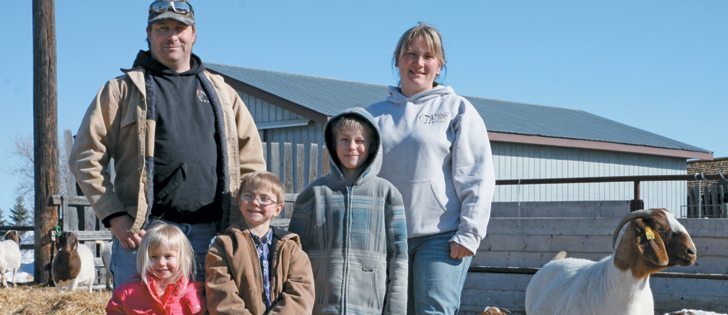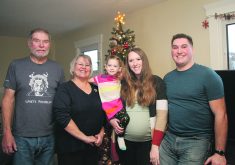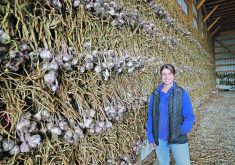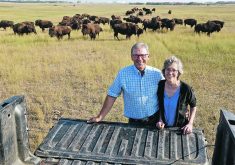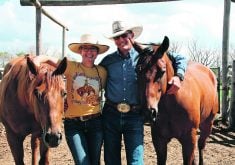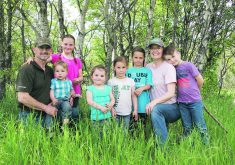Goats clear the brush, allowing grass to grow for the Speckle Park herd
EDGERTON, Alta. — Like most busy people, Laurie and Shay Fries are used to taking on more work.
With 160 goats, cattle, three children, hockey, ball, 4-H and two off-farm jobs, they recently added 30 Speckle Park heifers on a share program.
In addition, there is Laurie’s work as president of the Alberta Goat Association and her work on national and provincial biosecurity, animal health and animal welfare committees.
“If you want to change an industry, you have to get involved,” said Laurie.
The couple believes there is a strong future in the goat industry, especially as part of goat-beef herd combination.
Read Also

Rural Manitoba resources slim on natural disaster planning
A study from Brandon University’s Rural Development Institute has found that many rural and small municipalities don’t have the staff or resources to make formal climate plans against natural disaster.
“If you’ve got a goat, it’s sold. There is no lack of consumers,” said Laurie, whose goal is to see fresh goat meat in Canadian grocery stores.
In 2002, the couple bought land in Edgerton, Alta., and 100 bred cows. Despite the 2002 drought, they had connections in Saskatchewan and bought frost-killed feed.
Then came BSE.
“We were just getting started. We were newly married. We had just bought the farm. We had no money,” said Laurie.
Goats helped a friend out of a financial hole when chronic wasting disease devastated the elk industry. When they heard her story, the Fries became intrigued.
They bought 17 goats at Tofield Auction for “next to nothing,” said Shay.
“The goats pulled us through,” he said. “We needed to do something to supplement the income,” added Laurie.
Not only did the goats help pay the cattle bills during BSE, the goats helped clear the brush and allowed more grass to grow for the cattle.
The goats ate the brush growing through the junk left in the farmyard by the previous owner. Eventually the Frieses hauled 17 tonnes of scrap metal from the yard.
With little inexpensive land for sale in the area, the family believes the combination of goats and cattle will help better use their existing land base, a quarter section around their current house and three quarters of land near Shay’s parents, Albert and Gail.
Without good statistics on the number of goats in Canada, it is difficult to gauge the growth of the industry.
Ontario has the largest goat herd, followed by Quebec and Alberta. The latest Alberta Agriculture premise identification report shows 900 people reported goats on their premises in the province.
To help promote their herd, the family travels to Canadian Western Agribition’s goat show and other events.
“We’re getting noticed. I like promoting the industry any way we can,” said Laurie, whose goal is to expand their goat herd to 350 animals.
“They’re addictive little things.”
The combination of easy going, low-maintenance Speckle Park cattle and goats creates a nice income.
Laurie, who grew up on a grain and pork farm at Muenster, Sask., works at Sunhaven Farms, a multi-family pork business.
“I enjoy what I do so I don’t want to give that up,” she said.
Shay works for Talisman Energy and his income in the oil and gas business allows the family to weather the swings in the livestock business.
Contact mary.macarthur@producer.com

